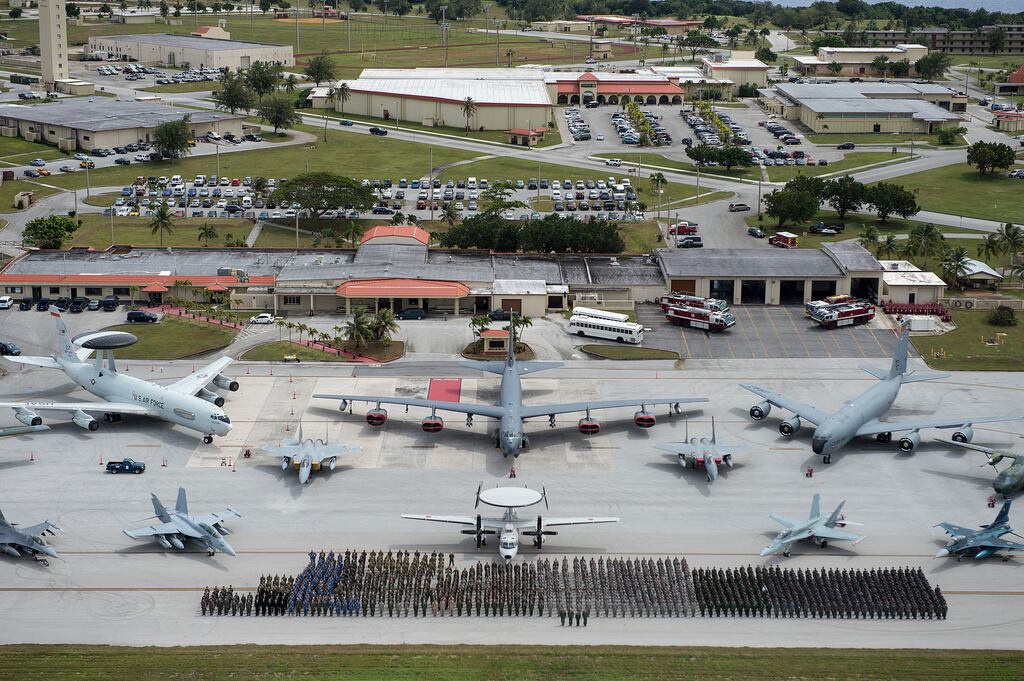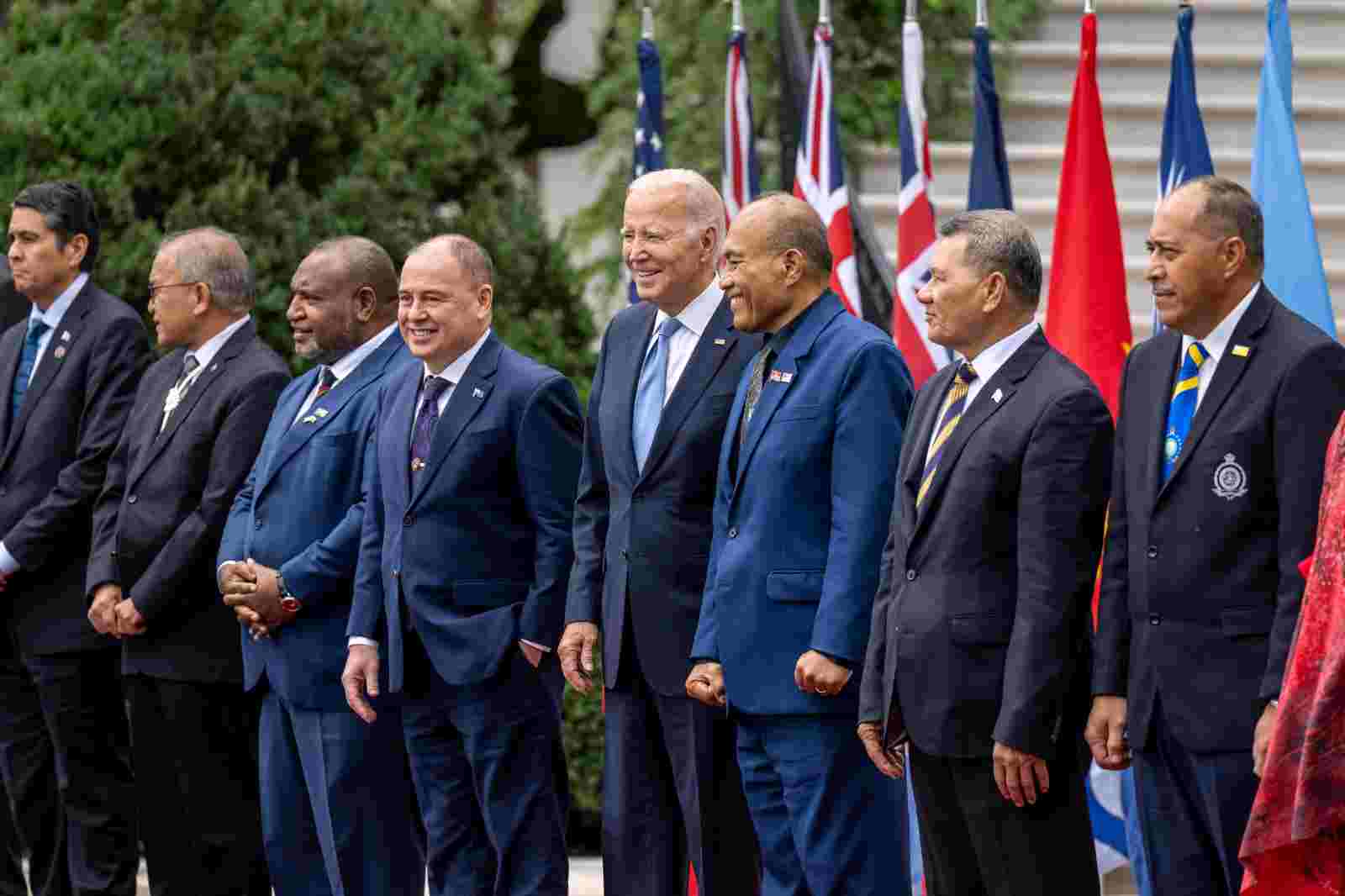

Donald Trump
Photo/The White House
Donald Trump’s relations with the Blue Pacific
The American leader's attention on the Pacific region amid geopolitical tension with China could help address the needs of small island nations, writes academic Tarcisius Kabutaulaka.


Heaven is real, Hell isn’t: My spiritual journey through ego, love and seeking out peace




Heaven is real, Hell isn’t: My spiritual journey through ego, love and seeking out peace


Pacific Island countries view Donald Trump’s impending return as President of the United States with hope and apprehension.
Trump’s attention on the region amid geopolitical tension with China could help address the needs of island countries. But his pledge to roll back US commitments to addressing the climate crisis is a significant concern.
The second Trump administration will find a region different from when last in office. Trump's inauguration will be held in Washington, DC, on Tuesday (NZ time). He will be sworn in as the 47th Commander-in-Chief.
Usually, the ceremony is held on the Capitol grounds, but this year, it has been moved indoors due to the dangerously cold weather forecasted for Washington this week.
Pacific Island nations have become more assertive diplomatically, in what some have referred to as the “new Pacific diplomacy.”
At the national level this was illustrated by Solomon Islands, Kiribati and Nauru’s decision to switch diplomatic ties from Taiwan to China despite pressure from Western countries, as well as the regional decision in 2022 to reject Beijing’s wide-ranging trade and security proposal, described by one observer as “an unequivocal display of not wanting to be used as pawns in a geopolitical contest.”
Trump has not yet outlined his second administration’s policies on the Pacific Islands. An “Indo-Pacific” focus has become a staple of US policy in the past decades, but a definitive prediction is difficult, given Trump’s impulsive temperament.
The previous Trump administration focused largely on diplomatic relations and security, establishing a Pacific Islands directorship in the National Security Council. In May 2019, Trump invited the presidents of the Freely Associated States (FAS) - Palau, the Federated States of Micronesia, and Marshall Islands – to the White House in a first-ever such visit. Security was central to their discussions.
In August the same year, then US Secretary of State Mike Pompeo visited Micronesia and met the FAS presidents, which drew an encouraging response from local leaders.

The inauguration, which would typically take place on the West Front of the US Capitol facing the National Mall, will instead be moved inside to the Capitol Rotunda. Photo/NPR
It was an opportunity to leverage geopolitical competition in the renegotiations of the Compact of Free Association (COFA) arrangement, which was concluded under the Biden administration with a US commitment of $7.1 billion over 20 years.
Hawaii and Guam are pivotal to the US military presence in the region. Hawaii hosts US Indo-Pacific Command, the largest unified combatant command in the world.
Guam’s political status as an unincorporated territory combined with its geographical proximity to Asia makes it a compelling strategic location and vital to the projection of US military power.
Under the first Trump administration, the US increased its military presence on Guam, not only as a response to China, but also in light of North Korea’s threats to fire missiles targeting Guam.
The emphasis on diplomacy and security is likely to continue with Trump’s return, especially given Beijing’s increasing influence and security overtures in Oceania through arrangements such as the China-Solomon Islands security agreement.
The military build-up in the north Pacific will likely continue. During his first presidency, Trump generally disliked international cooperation and the policy successes of his predecessor.

The Andersen Air Force Base in Guam. Photo/Tech. Sgt. Jason Robertson/US Air Force)
This has raised questions about whether he will continue with initiatives such as AUKUS, the trilateral partnership between Australia, UK and the US that will share defence-related science and technology and help Australia acquire nuclear-powered submarines, the “Partners in the Blue Pacific” arrangement, and the US-Papua New Guinea Defence Cooperation Agreement.
On the Pacific Partnership Strategy enacted by the Biden administration, the Trump administration will be critical of the list of giveaways not deemed in line with Trump’s notion of “America first.”
But whatever the fate of these agreements, Pacific Island countries should expect Trump to pursue a more transactional relationship, framed by the view that Pacific Islands are pawns in US security agendas and to counter China.
The Heritage Foundation, the organisation responsible for Project 2025 and influential in Trump circles, highlighted the importance of the Pacific Islands in the US efforts to counter China, stating: “The US must articulate a clear explanation for how the Pacific Islands fit into broader US interests and contributes to America’s security and prosperity.”

Former US President Joe Biden with leaders from the Pacific Islands in Washington. Photo/US State Department
For the Pacific Islands, the most important existential threat is climate change, as articulated in the Boe Declaration and related documents.
However, environmental challenges are an unlikely focus for Trump. He has persistently called climate change a “hoax” and “scam” and withdrew the US from the Paris Climate Agreement, and is widely expected to do so again.
On the campaign trail, Trump vowed to increase domestic production of oil and gas. This raises concern among Pacific Islanders about US commitments to the 1.5-degree Celsius warming target and climate finance.
While it is difficult to see Trump being committed to addressing the climate crisis, his advisors must be keenly aware that inaction on climate change could undermine US engagements with Pacific Islands.
This illustrates where the Pacific has found strength in the power of collective diplomacy, which island countries have deployed through regional mechanisms such as the 2050 Strategy for the Blue Pacific Continent as well as globally.
Vanuatu led a coalition of 132 countries calling for a non-binding advisory opinion from the International Court of Justice on the responsibilities of major greenhouse gas emitters.
Apart from bilateral and multilateral dealings with Pacific Island countries, the second Trump administration will also have to navigate the maze of state and non-state actors that have intersecting and sometimes conflicting interests and influences in the region.
That will require, not only intimate knowledge of the Pacific Islands, but also genuine relationships.
Washington’s talking points of friendship dating back to the Second World War will be insufficient because such a narrative is premised on the idea of US liberation of the Pacific, which is not shared across the region.
Tarcisius Kabutaulaka is an associate professor and former director of the Center for Pacific Islands Studies at the University of Hawai'i, Mānoa. He was educated in the Solomon Islands, Fiji, and Australia and previously worked at the East-West Center and the University of the South Pacific.
This article was first published in the Lowy Interpreter.